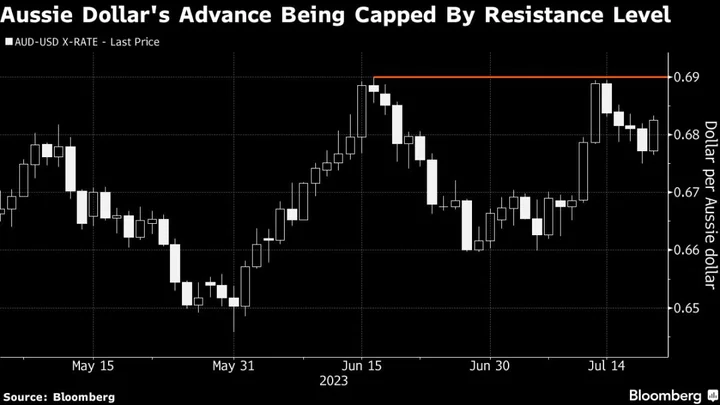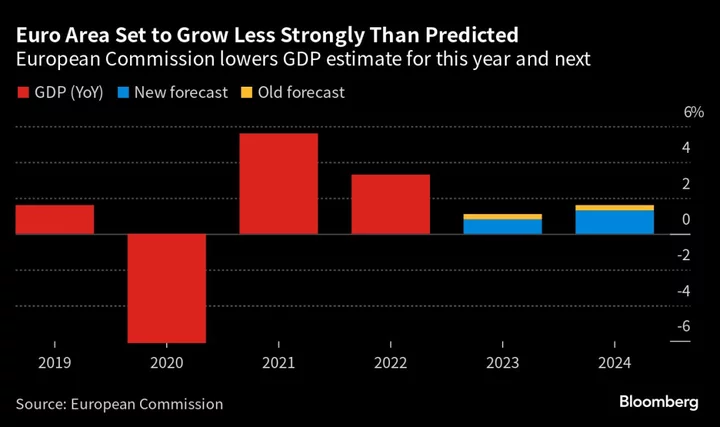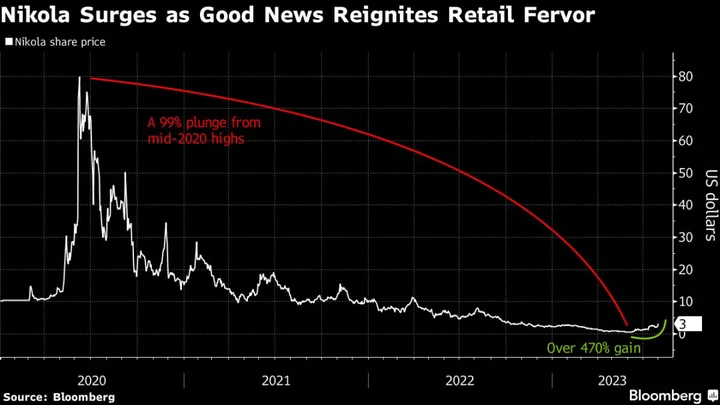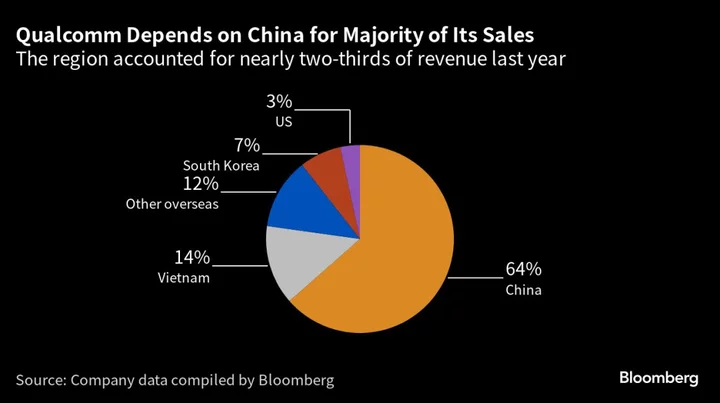The Australian dollar has been on an upswing this month as the greenback weakened. But risks are building on the horizon.
The commodity-driven Aussie faces headwinds as China’s growth continues to slow and easing domestic inflation undercuts the case for more interest-rate hikes. To make matters worse, this week’s Federal Reserve review may bolster the greenback and add to the Australian currency’s woes.
AUD/USD’s “upside looks to be capped near 0.69 near term by investor skepticism over China’s growth prospects, which only intensified with the lukewarm second-quarter GDP data,” said Sean Callow, senior currency strategist at Westpac Banking Corp. “There’s obviously uncertainty ahead of Australian CPI, but the US dollar is set to emerge from the FOMC meeting in solid shape, slowing the AUD/USD upswing.”
The Aussie’s fortunes have taken a tumble as the boost from China’s reopening fades, with analysts’ forecasts for the currency to rise above 70 US cents looking increasingly unattainable. Talk of a RBA rate cut is another dampener as the pass-through effect of higher rates on mortgages takes a toll on the Australian economy.
Australia’s currency fell 0.7% to 0.6729 US cents on Friday after rising as high as 68.95 cents this month. The currency has gained 1% so far in July.
June inflation data due Wednesday may help determine the Aussie’s near-term outlook. A Bloomberg survey of economists predicts that consumer-price gains eased to 6.3% in the second quarter from 7% in the previous three months on an annual basis, which is likely to undercut the case for more rate hikes.
Bloomberg Intelligence predicts that the RBA may start easing monetary policy in the first quarter of 2024 as the impact of previous rate increases filters through via variable-rate mortgages, which dominate Australia’s housing market. If that’s true, that will spell more bad news for the Aussie.
“The global economy is entering a difficult environment of slow growth or recession in the major economies that typically weighs on commodity currencies like AUD/USD,” Commonwealth Bank of Australia economists including Joseph Capurso and Kristina Clifton wrote in a July 18 note. CBA expects the Aussie to falling to 0.64 cents by year-end.
Here are the key Asian economic data due this week:
- Monday, July 24: Japan PMI’s, Singapore CPI, Malaysia CPI, New Zealand trade balance, Taiwan industrial production
- Tuesday, July 25: Bank Indonesia interest rate decision, South Korea 2Q GDP
- Wednesday, July 26: Australia 2Q CPI, South Korea consumer confidence, Singapore industrial production
- Thursday, July 27: China industrial profits
- Friday, July 28: Bank of Japan monetary policy decision, Australia retail sales and 2Q PPI, Taiwan 2Q GDP, New Zealand consumer confidence, South Korea industrial production









